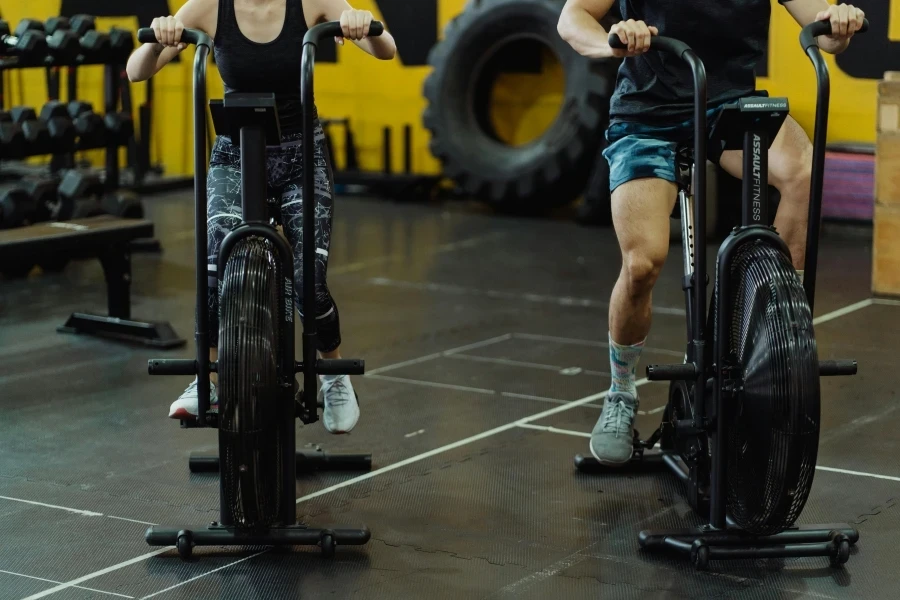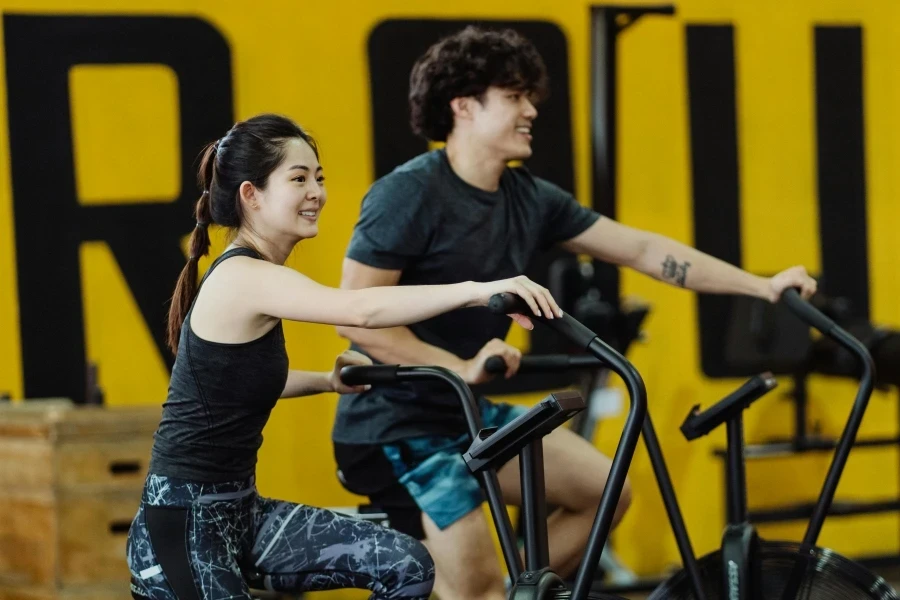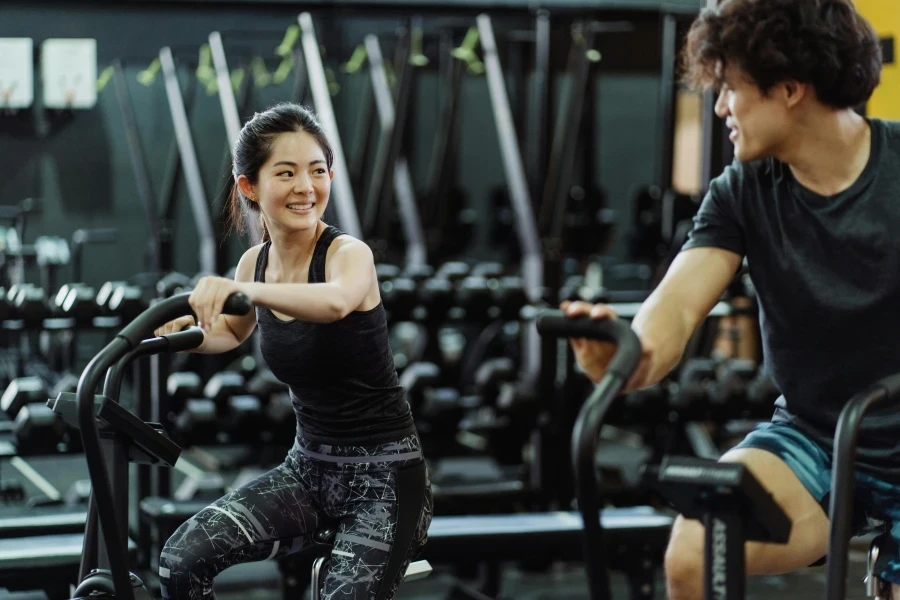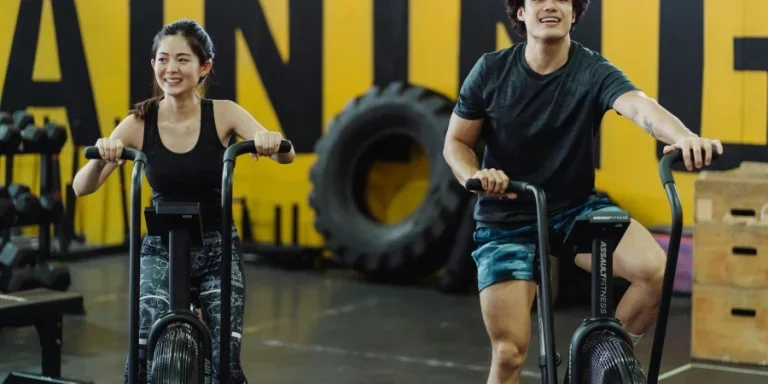Cross trainers, also known as elliptical trainers, have become a staple in the fitness industry. Their versatility and effectiveness in providing a full-body workout have made them increasingly popular among fitness enthusiasts and professionals alike. This article delves into the market dynamics, key players, and regional trends driving the growth of cross trainers.
Table of Contents:
Market Overview
Design and Features of Modern Cross Trainers
Materials and Durability
Functionality and Versatility
Market Overview

Growing Demand for Cross Trainers
The demand for cross trainers has been on a steady rise, driven by an increasing awareness of health and fitness. According to a report by Research and Markets, the global fitness equipment market, which includes cross trainers, is expected to grow significantly in the coming years. This growth is attributed to the rising prevalence of lifestyle diseases, increasing health consciousness, and the growing trend of home workouts.
With gyms and fitness centers closed or operating at limited capacity, many consumers have turned to home workouts to maintain their fitness routines. This shift has led to a surge in sales of cross trainers, as they offer a comprehensive workout solution that can be used in the comfort of one’s home.
Key Market Players and Innovations
The cross trainer market is highly competitive, with several key players driving innovation and growth. Companies such as Nautilus, Inc., ICON Health & Fitness, Inc., and Johnson Health Tech Co., Ltd. are leading the market with their advanced product offerings and innovative technologies.
Nautilus, Inc., for instance, has introduced several high-tech features in their cross trainers, such as Bluetooth connectivity, app integration, and interactive workout programs. These features enhance the user experience and provide a more engaging and effective workout.
ICON Health & Fitness, Inc., known for its brands like NordicTrack and ProForm, has also been at the forefront of innovation. Their cross trainers come equipped with iFit technology, which offers personalized workout programs, live and on-demand classes, and real-time performance tracking.
Johnson Health Tech Co., Ltd., another major player in the market, focuses on ergonomic designs and user-friendly features. Their cross trainers are designed to provide a natural and comfortable workout experience, reducing the risk of injury and improving overall performance.
Regional Market Trends
The cross trainer market exhibits significant regional variations, with North America, Europe, and Asia-Pacific being the major markets. According to a report by Statista, the United States is the largest revenue-generating country in the gym and training market, which includes cross trainers. The market in the U.S. is driven by a high level of health consciousness, a well-established fitness culture, and the presence of major market players.
In Europe, the market is also growing steadily, with countries like Germany, the United Kingdom, and France leading the way. The increasing popularity of home fitness equipment, coupled with government initiatives promoting physical activity, is driving the demand for cross trainers in the region.
The Asia-Pacific region is expected to witness the highest growth rate in the coming years. The rising disposable income, growing awareness of health and fitness, and the increasing adoption of Western fitness trends are some of the key factors driving the market in this region. Countries like China, India, and Japan are emerging as significant markets for cross trainers, with a growing number of fitness enthusiasts and a burgeoning fitness industry.
Design and Features of Modern Cross Trainers

Ergonomic and User-Friendly Designs
Modern cross trainers have evolved significantly in terms of design, focusing on ergonomics and user-friendliness. The primary goal is to provide a comfortable and efficient workout experience. Ergonomic designs ensure that the equipment supports the natural movement of the body, reducing the risk of injury and enhancing the effectiveness of the workout. Features such as adjustable stride lengths, cushioned foot pedals, and multi-grip handles cater to users of different heights and fitness levels, making the equipment versatile and accessible.
User-friendly designs also include intuitive interfaces and easy-to-use controls. Many cross trainers now come with touch screens that display workout metrics such as heart rate, calories burned, and distance covered. These interfaces are often customizable, allowing users to set their preferences and track their progress over time. Additionally, the inclusion of quick-start buttons and pre-programmed workout routines simplifies the user experience, making it easier for beginners to get started and for experienced users to challenge themselves.
Advanced Technological Features
The integration of advanced technology has transformed cross trainers into sophisticated fitness machines. One of the most notable advancements is the incorporation of smart technology, which allows users to connect their cross trainers to fitness apps and wearables. This connectivity enables users to sync their workout data with their smartphones or tablets, providing a comprehensive view of their fitness journey. According to reports, features such as Bluetooth and Wi-Fi connectivity are becoming standard in modern cross trainers.
Another significant technological feature is the inclusion of virtual training programs. These programs offer immersive workout experiences by simulating outdoor environments or providing guided workouts led by professional trainers. Users can choose from a variety of virtual courses, ranging from scenic trails to high-intensity interval training sessions. This not only makes workouts more engaging but also helps users stay motivated and achieve their fitness goals.
Customization and Personalization Options
Customization and personalization are key trends in the design of modern cross trainers. Manufacturers are increasingly offering options that allow users to tailor their workouts to their specific needs and preferences. For instance, adjustable resistance levels enable users to control the intensity of their workouts, making it possible to target different muscle groups and achieve specific fitness objectives.
Personalization options also extend to the user interface. Many cross trainers now come with customizable display settings, allowing users to choose the information they want to see during their workouts. This can include metrics such as heart rate, speed, and calories burned, as well as personalized workout recommendations based on the user’s fitness level and goals. Additionally, some models offer user profiles, enabling multiple users to save their settings and track their progress independently.
Materials and Durability

High-Quality Materials for Longevity
The durability of a cross trainer is largely determined by the quality of the materials used in its construction. High-quality materials not only ensure the longevity of the equipment but also enhance its performance and safety. Modern cross trainers are typically made from robust materials such as steel and aluminum, which provide a sturdy and stable frame. These materials are resistant to wear and tear, ensuring that the equipment can withstand regular use over an extended period.
In addition to the frame, other components such as the foot pedals, handles, and resistance mechanisms are also made from durable materials. For example, foot pedals are often constructed from high-density plastic or rubber, which provides a comfortable and secure grip. Handles are usually coated with non-slip materials to prevent slippage during intense workouts. According to industry reports, the use of high-quality materials is a key factor in the overall durability and reliability of modern cross trainers.
Weather Resistance and Maintenance
Weather resistance is an important consideration for users who plan to use their cross trainers in outdoor or semi-outdoor environments. Modern cross trainers are designed to withstand various weather conditions, including rain, humidity, and extreme temperatures. This is achieved through the use of weather-resistant materials and protective coatings. For instance, frames are often treated with anti-corrosion coatings to prevent rust and degradation, while electronic components are sealed to protect against moisture and dust.
Maintenance is another crucial aspect of ensuring the longevity of a cross trainer. Regular maintenance not only keeps the equipment in optimal condition but also prevents potential issues from arising. Manufacturers typically provide maintenance guidelines, which may include tasks such as lubricating moving parts, tightening bolts and screws, and cleaning the equipment after use. Some models also come with self-diagnostic features that alert users to potential maintenance needs, making it easier to keep the equipment in good working order.
Safety and Comfort Considerations
Safety and comfort are paramount when it comes to the design of cross trainers. Manufacturers prioritize these aspects to ensure that users can exercise without the risk of injury and with maximum comfort. Safety features often include non-slip foot pedals, secure hand grips, and stable frames that prevent wobbling during use. Additionally, many cross trainers come with safety locks and emergency stop buttons, allowing users to quickly halt the machine in case of an emergency.
Comfort considerations are equally important, as they directly impact the user’s workout experience. Ergonomically designed foot pedals and handles reduce strain on the joints and muscles, while cushioned surfaces provide added comfort. Adjustable components, such as the stride length and handle height, allow users to customize the equipment to their body size and preferences. According to industry experts, these safety and comfort features are essential for promoting a positive and effective workout experience.
Functionality and Versatility

Multi-Functional Use in Various Settings
Modern cross trainers are designed to be versatile, catering to a wide range of fitness activities and settings. They are suitable for use in home gyms, commercial fitness centers, and rehabilitation facilities. The multi-functional nature of cross trainers allows users to perform various types of workouts, including cardio, strength training, and interval training. This versatility makes them an ideal choice for users with diverse fitness goals and preferences.
In addition to traditional workouts, cross trainers can also be used for specialized training programs. For example, athletes may use cross trainers for sport-specific conditioning, while individuals recovering from injuries may use them for low-impact rehabilitation exercises. The ability to adjust resistance levels and customize workout programs further enhances the functionality of cross trainers, making them suitable for users of all fitness levels.
Integration with Fitness Apps and Wearables
The integration of cross trainers with fitness apps and wearables has revolutionized the way users track and manage their workouts. By connecting their cross trainers to popular fitness apps, users can access a wealth of data and insights about their performance. This includes metrics such as heart rate, calories burned, and workout duration, which can be synced with other health and fitness data on their smartphones or tablets.
Wearables, such as fitness trackers and smartwatches, also play a significant role in enhancing the functionality of cross trainers. These devices can monitor various aspects of the user’s health and fitness, providing real-time feedback and personalized recommendations. For example, a fitness tracker may alert the user when they reach their target heart rate zone or suggest adjustments to their workout intensity based on their performance. According to industry reports, the integration of cross trainers with fitness apps and wearables is a key trend that is driving innovation in the fitness equipment market.
Seasonal Trends and Usage Patterns
Seasonal trends and usage patterns can significantly impact the demand for cross trainers. During the colder months, when outdoor exercise may be less appealing, the popularity of indoor fitness equipment such as cross trainers tends to increase. Users often turn to cross trainers as a convenient and effective way to maintain their fitness routines without having to brave the elements. This seasonal demand is reflected in sales patterns, with a noticeable uptick in purchases during the winter months.
Conversely, during the warmer months, users may be more inclined to engage in outdoor activities, leading to a slight decline in the use of indoor fitness equipment. However, cross trainers remain a popular choice for those who prefer the convenience and controlled environment of indoor workouts. Additionally, the versatility of cross trainers makes them suitable for year-round use, regardless of the weather. According to market analysts, understanding these seasonal trends and usage patterns is essential for manufacturers and retailers to effectively meet the needs of their customers.
Conclusion
The evolution of cross trainers has been marked by significant advancements in design, technology, and functionality. Modern cross trainers offer ergonomic and user-friendly designs, advanced technological features, and a high degree of customization and personalization. The use of high-quality materials ensures durability and longevity, while safety and comfort considerations enhance the overall workout experience. The integration with fitness apps and wearables, along with the versatility of cross trainers, makes them a valuable addition to any fitness routine. As the fitness industry continues to innovate, the future of cross trainers looks promising, with new features and improvements set to further enhance their appeal and effectiveness.




